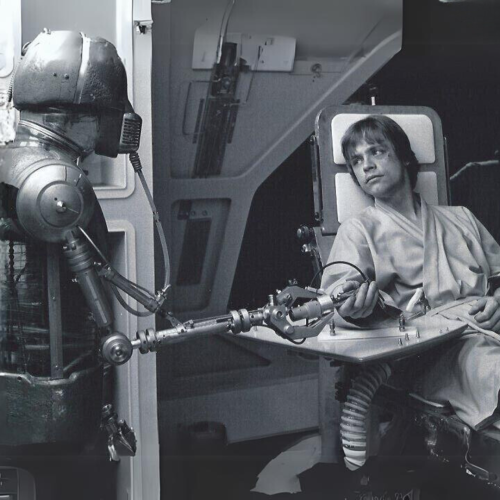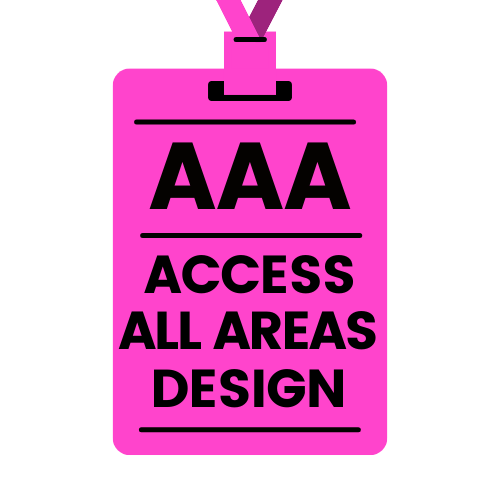READY PLAYER ONE

When we imagined the future when we were kids, we pictured flying cars, robots at our beck and call, meals in pill form, jet-packs, and colonies on other planets. Future technology made life seem so much easier with science fiction films like Star Wars fuelling our imagination at all the technological possibilities of not only spaceships and light sabres, but also medical advances like Darth Vader’s ventilator and Luke Skywalker’s bionic hand.
From the smartphone in our pocket to the satellite navigation in the car, assistive technology helps us work, socialise and connect with others. Over the last few years, many of the leading multinational technological organisations have leveraged artificial intelligence, computer vision (the science and technology of machines that see), and advances in voice recognition to deliver tools to assist people with disabilities. But can technology help? Can machines or apps make life easier for a person with a disability? And are these industries doing enough to make their products – and the world – accessible to all?
Development of products and experiences that promote inclusion and assist people with disabilities to overcome the challenges they face is driven by a few factors for tech organisations – a desire to be more inclusive, to be leaders in innovation, and, it’s good for business. Companies are aware that to keep expanding their customer base, they need to make products that everyone can use.
Although there are countless ways that technology is helping to empower people with disabilities – from 3D printing prosthetic limbs, and virtual reality musical instruments, to travel apps that allow wheelchair users, and people with sensory disabilities to find out how accessible a building is before they visit it – there is still room for progress across the tech industry.
Disability advocates say that ideally, companies should build assistive technology into their development process, rather than as an afterthought. “People want their accessibility tools to be built into the same devices that everybody else is using whenever possible, rather than have their own device that makes them stand out because of their disability,” says Eve Andersson, the director of accessibility engineering at Google. Instead of releasing an accessible version of something later, it would be great if designers, software developers, and computer scientists were accessibility aware from the beginning. When you create something accessible for a specific group of people, everyone benefits.
Here are a few examples of assistive technology that you may not be aware of:

LEVEL UP
Microsoft recently released the Xbox Adaptive Controller that empowers gamers with limited mobility to operate their video game controller with ease. Input from disabled groups helped shape the design, functionality and packaging of the controller which comes with multiple ports that are compatible with a range of
accessibility peripherals, including bite switches, single-handed joysticks,
and foot pedals. The packaging also has been designed with disabled people in mind – designers following a “no teeth” principle that didn’t require users to open the package with their teeth.
AN EMOJI IS WORTH A THOUSAND WORDS
Whether you use them or not, emojis are an everyday part of our digital lives and a fun and easy way to express ourselves via texting and on social media. Amongst 230 new emojis that are being launched this year, it’s great to see that disability- inclusive emojis have been created, especially since disability has been underrepresented until now. The new characters include hearing aids, wheelchairs, prosthetic limbs, guide dogs, and men and women of different ethnicities using disability aids. Most smartphones should gain them in the latter half of 2019.
SHUT THE FRONT DOOR
Keyless door locks have been around for a while and although there may initially have been some slight glitches, the technology is getting better. Biometric locks employ high-tech fingerprint recognition technology in the form of an optical or thermal scanner to read and memorise your fingerprint and verify your identity before allowing a locked door to be opened. Not only does this authentication process provide security, there is the added bonus of ease of entry – no more fumbling with keys!
DON’T WORRY, BE ‘APPY
Seeing AI is a free app that narrates your surroundings, allowing you to navigate the world by hearing it. Designed for people that are vision impaired, it harnesses the power of AI to describe people, text, and objects including locating and scanning barcodes to identify products, reading and speaking handwriting out loud, and recognising friends and describing their facial expressions. It allows users to customise the voice that it uses to speak its observations and set how fast it talks, and is continually being upgraded with new features.
